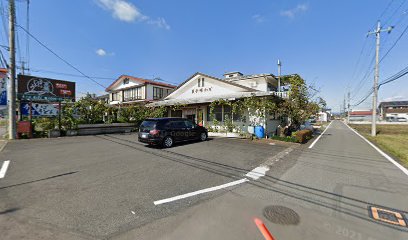
Shinkyō Bridge: A Historical Gem in Nikko
Explore the stunning Shinkyō Bridge in Nikko, a UNESCO World Heritage site, where history and breathtaking scenery come together.
Shinkyō Bridge, a stunning UNESCO World Heritage site, is a must-see for tourists in Nikko. This picturesque bridge offers breathtaking views of the surrounding landscape and rich historical significance, making it a perfect spot for photography and quiet contemplation.
A brief summary to Shinkyō Bridge
- Kamihatsuishimachi, Nikko, Kamihatsuishimachi, Tochigi, 321-1401, JP
- +81288-54-0535
- Visit website
- Monday 8:30 am-4:30 pm
- Tuesday 8:30 am-4:30 pm
- Wednesday 8:30 am-4:30 pm
- Thursday 8:30 am-4:30 pm
- Friday 8:30 am-4:30 pm
- Saturday 8:30 am-4:30 pm
- Sunday 8:30 am-4:30 pm
Local tips
- Visit early in the morning to enjoy peaceful views without the crowds.
- Bring a camera to capture the stunning scenery, especially during cherry blossom season.
- Check local events, as there may be seasonal festivals nearby enhancing your visit.
- Wear comfortable shoes for exploring the surrounding historical sites.
Getting There
-
Car
If you're driving to Shinkyō Bridge from Tokyo, take the Tōmei Expressway (A1) towards Nagoya. After about 70 km, merge onto the Kanetsu Expressway (E17) towards Niigata. Continue on the Kanetsu Expressway for about 130 km. Take exit 124 for Nikko. Follow Route 119 towards Nikko, then follow the signs to Shinkyō Bridge, which is located in Kamihatsuishimachi, Nikko. There is parking available nearby.
-
Public Transportation
To reach Shinkyō Bridge using public transportation, take the Tōbu Nikko Line from Asakusa Station in Tokyo to Tobu Nikko Station. The journey takes about 2 hours. Once you arrive at Tobu Nikko Station, exit the station and take a bus (Nikko City Bus) towards Shinkyō Bridge. The bus ride will take approximately 10 minutes. Alight at the Shinkyō stop and walk a short distance to reach the bridge.
Discover more about Shinkyō Bridge
Iconic landmarks you can’t miss
World Heritage Monument
0.0 km
Experience the enchanting beauty and rich history of the World Heritage Monument in Nikko, Japan, a must-visit destination for every traveler.

日光金谷ホテル
0.1 km
Discover the harmony of tradition and nature at Kanaya Hotel, a historic retreat in the scenic beauty of Nikko, Tochigi.

Nikko Tokinoyuu
0.1 km
Experience authentic Japanese hospitality at Nikko Tokinoyuu, a serene ryokan surrounded by the natural beauty of Tochigi, Japan.

Sanpukujaya
0.3 km
Discover the sweet taste of tradition at Sanpukujaya, a charming Japanese confectionery shop in Nikko, serving delicious rice dango with unique glazes.

Nikkozan Rin’nōji Temple
0.4 km
Experience peace and spirituality at Nikkozan Rin’nōji Temple, a UNESCO World Heritage site in Japan, surrounded by breathtaking natural beauty.

Nikko Senhime Monogatari
0.6 km
Discover the elegance of traditional Japanese hospitality at Nikko Senhime Monogatari, a serene retreat in the heart of Nikko's cultural heritage.

Sanjinko
0.6 km
Experience the tranquil beauty of Sanjinko, a historic Shinto shrine in Nikko, where spirituality meets stunning architecture in nature's embrace.

Gohonsha
0.7 km
Explore Gohonsha Shrine in Nikko, a serene oasis of spirituality and traditional Japanese architecture amidst lush nature.

Turtle Inn Nikko
0.7 km
Discover the serenity and charm of Turtle Inn Nikko, where traditional Japanese hospitality meets breathtaking nature and rich cultural heritage.

Nikko Cottage FU-SHA
1.0 km
Discover the authentic Japanese experience at Nikko Cottage FU-SHA, a tranquil retreat surrounded by nature and culture.

Stay Nikko Guesthouse
1.1 km
Discover the warm-hearted hospitality of Stay Nikko Guesthouse, your cozy base for exploring the natural and cultural wonders of Nikko, Japan.
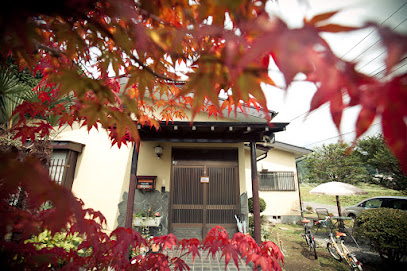
Nikko Park Lodge Mountain Side
1.1 km
Discover the serene charm of Nikko Park Lodge Mountain Side, your perfect retreat to explore the breathtaking beauty of Nikko's mountains and cultural heritage.

COCON NIKKO Kimono Rentals
1.2 km
Explore the beauty of Nikko in a traditional kimono, capturing unforgettable memories in Japan’s cultural heart.

Tōbu-nikkō Station
1.5 km
Discover the gateway to Nikko's natural beauty and cultural treasures at Tōbu-Nikkō Station, your starting point for unforgettable adventures.

Nikko Park Lodge Tobu Station
1.5 km
Experience the essence of Nikko at Nikko Park Lodge, your ideal retreat for exploring Japan's natural beauty and cultural treasures.

Unmissable attractions to see
Taro Sugi Japanese Cedar Tree
0.0 km
Explore the Taro Sugi Japanese Cedar Tree, a majestic natural monument in Nikko, Tochigi, embodying the tranquility and beauty of Japan's rich heritage.

Bell of Good Match
0.0 km
Explore the Bell of Good Match in Nikko, a serene tourist attraction steeped in history and surrounded by Japan's breathtaking natural beauty.

名水 磐裂霊水
0.1 km
Experience the breathtaking beauty of Meisui Shisui Waterfall in Nikko, Tochigi, where nature's serenity awaits in every cascading drop.
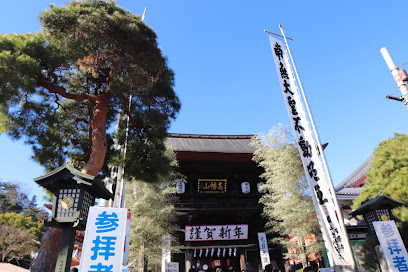
Asaya Resthouse
0.1 km
Discover the authentic taste of Japan at Asaya Resthouse, a culinary haven in the heart of Nikko, Tochigi, offering exquisite local flavors and stunning views.

Nikko Hoshinoyado
0.2 km
Discover the serenity of Nikko Hoshinoyado, where traditional Japanese hospitality meets natural beauty and exquisite dining.

Kosugi Hōan Museum of Art
0.2 km
Experience the beauty of Japanese art at the serene Kosugi Hōan Museum of Art in Nikko, Tochigi Prefecture.

Nikko Yubamaki ZEN
0.2 km
Discover the authentic taste of Japan at Nikko Yubamaki ZEN, specializing in shabu-shabu and exquisite tofu dishes in the heart of Nikko.

Rin’nōji Houmotsuden treasure house
0.3 km
Explore Rin’nōji Houmotsuden, a treasure house in Nikko showcasing exquisite Buddhist artifacts and rich cultural heritage.

世界遺産「日光の社寺」区域案内図
0.4 km
Discover the spiritual and architectural wonders of Nikko's 'Shrine of the Sun', a UNESCO World Heritage site surrounded by breathtaking natural beauty.

Nikkozan Rin’nōji Temple sanbutsudo
0.4 km
Explore the serene beauty and spiritual heritage of Nikkozan Rin’nōji Temple, a hidden gem in Tochigi, Japan.

Nikko Momijiza
0.4 km
Experience the enchanting world of Taishu-Engeki at Nikko Momijiza, a cultural gem in Tochigi, Japan, where tradition meets performance art.

Matsuyashiki Villa and Garden
0.4 km
Experience tranquility at Matsuyashiki Villa and Garden, a captivating blend of traditional Japanese architecture and stunning natural beauty in Nikko, Tochigi.

Nikko Toshogu Hōmotsukan Museum
0.4 km
Immerse yourself in the rich history of Japan at the Nikko Toshogu Hōmotsukan Museum, home to remarkable artifacts and serene surroundings.

Nikkō Tōshogū Art Museum
0.6 km
Explore the artistic legacy of Japan at Nikkō Tōshōgū Art Museum, where history and culture come alive through exquisite exhibits.

Kōyamaki (Japanese Umbrella-Pine Tree)
0.6 km
Explore Kōyamaki, the magnificent Japanese Umbrella-Pine Tree, a symbol of longevity and beauty, set in the scenic landscapes of Nikko, Tochigi.

Essential places to dine
Grill & Steak Myōgetsubō
0.1 km
Experience exquisite Japanese steakhouse dining at Grill & Steak Myōgetsubō, where culinary tradition meets modern creativity in Nikko.

Yuba ryōri Aburagen
0.1 km
Experience authentic Japanese cuisine at Yuba ryōri Aburagen in Nikko, specializing in delicate yuba dishes crafted from local ingredients.

Nagomi Cha-ya
0.2 km
Experience authentic kaiseki dining at Nagomi Cha-ya in Nikko, where tradition meets culinary excellence in every exquisite dish.

Hippari-Dako
0.2 km
Experience authentic teishoku dining at Hippari-Dako in Nikko, where tradition meets flavor in every dish.

Bar de Nikko
0.2 km
Discover Bar de Nikko, where modern izakaya meets café culture in scenic Nikko - indulge in authentic Japanese flavors today.

Eat Asai
0.4 km
Discover authentic Chinese cuisine and exquisite dim sum at Eat Asai, a culinary gem in Nikko that delights every visitor.

SHIORI
0.7 km
Discover Nikko's finest dining at SHIORI - where traditional Japanese flavors meet modern creativity.

Nikko Maruhide Shokudo
0.7 km
Experience the best of traditional Japanese cuisine at Nikko Maruhide Shokudo with fresh ingredients and local flavors.

Cafe Restaurant BELL
0.7 km
Experience the best vegetarian cuisine in Nikko at Cafe Restaurant BELL, where fresh ingredients meet warm hospitality.

ガスト 日光店
0.8 km
Experience family-friendly dining at Gusto Nikko with delicious Japanized Western cuisine in an inviting atmosphere.

日光カステラ本舗磐梯日光店2階食堂
0.8 km
Experience authentic Japanese cuisine at Nikko Castella, renowned for its traditional dishes and delectable castella cake in the heart of Nikko.

Takai-ya
0.8 km
Experience the elegance of kaiseki dining at Takai-ya in Nikko – where every meal is a masterpiece reflecting Japan's culinary artistry.

Enya
1.0 km
Experience the best of Japanese hospitality and gourmet steak at Enya in Nikko – where tradition meets culinary excellence.

Yubatei Masudaya
1.1 km
Experience authentic kaiseki dining at Yubatei Masudaya in Nikko – where tradition meets exquisite taste amidst serene gardens.

Gyoza no Umechan
1.3 km
Savor authentic Japanese flavors at Gyoza no Umechan in Nikko – where delicious gyoza meets flavorful ramen in a cozy atmosphere.

Markets, malls and hidden boutiques
Nikko Bussan Shokai
0.1 km
Discover authentic Japanese souvenirs and local delights at Nikko Bussan Shokai, the perfect stop for travelers in Nikko, Tochigi.

キッチングッズ 柳屋
7.8 km
Explore Yanagiya Kitchen Goods in Nikko for exquisite kitchenware, pottery, and unique gifts that showcase the best of Japanese craftsmanship.

Chez Akabane
8.0 km
Savor the essence of Nikko with exquisite pastries at Chez Akabane, a must-visit for every sweet tooth exploring Tochigi.

Roadside Station Nikko
8.1 km
Experience the charm and convenience of Roadside Station Nikko, where culture meets comfort in the heart of Tochigi.

Watanabe Sahei Sake Shop
8.1 km
Experience the rich tradition of sake brewing at Watanabe Sahei Sake Shop in Nikko, Tochigi, where every bottle tells a story.

ニコニコ マルシェ
8.2 km
Explore the vibrant Niko Niko Marche in Nikko for a unique blend of local cuisine and handcrafted souvenirs that celebrate Japanese culture.

Nikko Landmark
8.2 km
Experience shopping and dining at Nikko Landmark, a vibrant mall in Nikko, Tochigi, blending modern retail with cultural richness.

Nikkokohi Tamamokoji
8.2 km
Discover the exquisite flavors of Nikkokohi Tamamokoji, where artisanal coffee meets delightful Western cuisine in the heart of Nikko.

Morinoshizuku
8.3 km
Experience the tranquil escape of Morinoshizuku, where exceptional coffee meets the serene beauty of Nikko's nature.

Atelier AKIHIRO KAWAI
8.3 km
Explore the exquisite craftsmanship of Japanese leather goods at Atelier AKIHIRO KAWAI in Nikko, where tradition meets elegance.

Shimosaka Tea Stall
8.3 km
Experience authentic Japanese tea culture at Shimosaka Tea Stall in Nikko - a serene retreat for tea lovers and cultural explorers.

菓子処 みかど
8.3 km
Explore the delightful world of Japanese sweets at 菓子処 みかど in Nikko, Tochigi, where tradition meets taste.

二宮堂
8.5 km
Explore the delightful world of traditional Japanese sweets at 二宮堂, a must-visit destination in Nikko for dessert enthusiasts.

KASHIWA CAFE&COFFEEROASTERY | 珈茶話
8.6 km
Discover the rich flavors of artisanal coffee at Kashiwa Cafe & Coffee Roastery, a tranquil escape for coffee lovers in Nikko, Tochigi.

Tsutaya
8.9 km
Discover Tsutaya in Nikko: A cultural treasure trove for book lovers, featuring books, CDs, and comics in a vibrant, inviting atmosphere.

Essential bars & hidden hideouts
Shinkyo Inn Cafe Bar
0.1 km
Discover the enchanting Shinkyo Inn Cafe Bar in Nikko, offering a perfect blend of café delights and bar charm amidst stunning natural beauty.

Murmur Biiru Stand
0.2 km
Discover the charm of Murmur Biiru Stand in Nikko, a cozy bar with craft beers, quirky decor, and a welcoming atmosphere for all travelers.

Wine Bar BLESS (Japanese wine only)
0.7 km
Experience the rich flavors of Japanese wines in a cozy bar setting at Wine Bar BLESS in Nikko.

Sake Café Lab 250
0.7 km
Experience the best of Japanese sake and whiskey in a cozy café setting at Sake Café Lab 250, a hidden gem in Nikko, Tochigi.
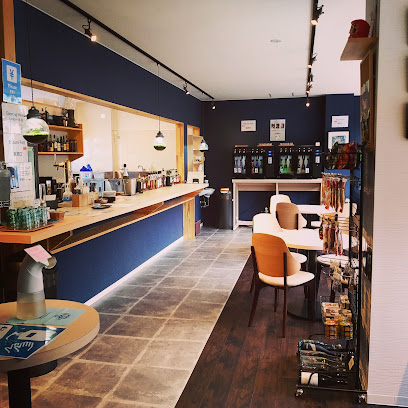
winebar OLIVE ワインバー オリーブ
7.9 km
Discover the exquisite charm of Winebar OLIVE in Nikko, where fine wines and a cozy atmosphere come together for an unforgettable experience.

あんず
8.0 km
Discover the charm of Japanese spirits at あんず, a cozy bar in Nikko offering a delightful selection of sake and shochu in a serene atmosphere.

キャディー&ピエロ
8.1 km
Discover the authentic taste of Japan at キャディー&ピエロ, a lively izakaya in Nikko offering delicious cuisine and a vibrant atmosphere.
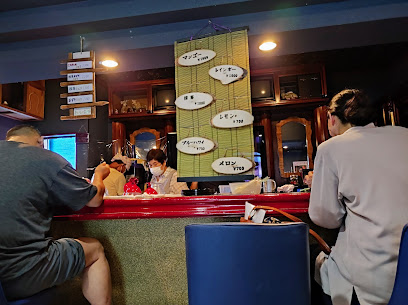
BAR KATZE(カッツェ)
8.3 km
Discover Bar Katze in Nikko, Tochigi - where cozy ambiance meets a delightful drink selection for a memorable night out.

ほろ酔い処みえ
8.4 km
Discover the charm of Japanese bar culture at ほろ酔い処みえ in Nikko, offering a warm ambiance and a diverse selection of local drinks.

カラオケUTAとも
8.7 km
Experience the joy of singing at Karaoke UTA Tomo, a lively bar in Nikko offering private karaoke rooms and a vibrant atmosphere for music lovers.

hrát
8.7 km
Discover hrát, a cozy bar in Imaichi, Nikko, where locals and visitors unite over exceptional drinks and a vibrant atmosphere.
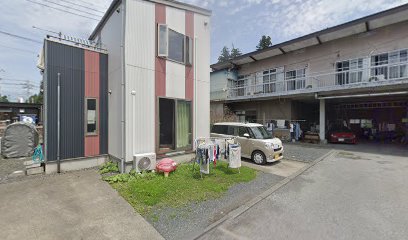
ダイニングバー・SOBA
9.4 km
Discover the vibrant ambiance of ダイニングバー・SOBA, a hidden gem in Nikko perfect for enjoying local drinks and delicacies.
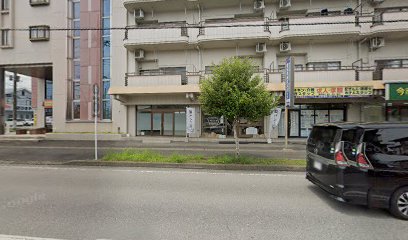
The Bar
9.6 km
Experience the elegance of The Bar at The Ritz-Carlton in Nikko, where luxurious drinks meet breathtaking views and serene ambiance.

Night Bar AHANa
9.8 km
Discover the lively atmosphere of Night Bar AHANa in Nikko, Tochigi, where great drinks and vibrant nightlife await.

饅頭
10.6 km
Discover the cozy ambiance and unique beverages of 饅頭 Bar, a hidden gem in Nikko, Tochigi, perfect for unwinding after a day of exploration.
